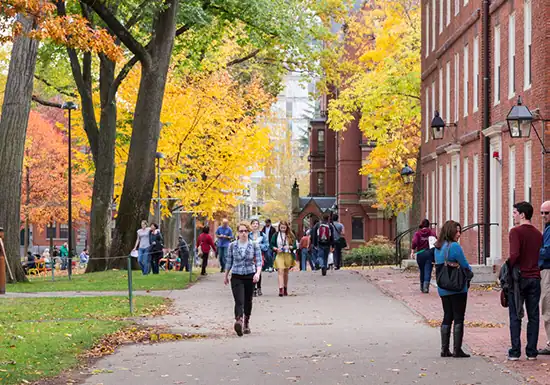10 Cheapest and Most Affordable Colleges in Oregon
Updated: October 1, 2025

If you’re planning to earn a degree in Oregon, you might be pleasantly surprised by how many budget-friendly options are available. While the state is known for its natural beauty and innovative economy, it’s also home to several colleges and universities that combine strong academics with affordable tuition.
Whether you’re looking for a technical degree, a liberal arts foundation, or a career-focused education, Oregon’s colleges offer a wide range of programs at prices that won’t break the bank. Public universities across the state provide access to respected faculty, student support, and financial aid programs that keep higher education within reach. Even some private institutions in Oregon maintain reasonable tuition, especially when paired with scholarships and grants.
This guide covers the 10 cheapest and most affordable colleges in Oregon. It’s designed to help you compare options, understand tuition differences between schools, and evaluate other key factors like location, cost of living, and financial support. If you want to make a smart decision that balances quality with affordability, this list is a great place to start.
Why Should You Get a Degree in Oregon?
Oregon isn’t just a great place to live, it’s a smart place to study. The state is a hub for innovation, sustainability, and technology, offering job opportunities with companies like Intel, Nike, and Columbia Sportswear. With thriving sectors in clean energy, healthcare, and outdoor recreation, earning a degree in Oregon can set you up for success in some of the country’s fastest-growing industries.
Beyond career prospects, Oregon colleges offer programs that reflect the state’s forward-thinking values. Whether you’re interested in green technology, environmental science, or cutting-edge design, you’ll find degrees aligned with the industries that drive Oregon’s economy. Plus, the state offers helpful financial aid programs like the Oregon Opportunity Grant and Oregon Promise, which can make a big dent in your overall education costs.

10 Most Affordable Colleges in Oregon
Oregon’s colleges offer more than just beautiful campus settings; they deliver quality education at prices that won’t overwhelm your budget. From public universities with strong research programs to smaller schools with tight-knit learning communities, the state provides affordable pathways to a meaningful degree.
Portland State University
Portland State University (PSU) is a public research university located in downtown Portland, offering affordable degree pathways with strong ties to the local community and industries.
Main Courses
- Business: Accounting, marketing, and supply chain management
- Urban Studies & Planning: Housing policy, sustainability, and transportation
- Social Sciences: Sociology, political science, and public administration
Pros
- Strong community partnerships and access to internships in Portland
- Focus on sustainability and urban innovation
Cons
- Large class sizes in introductory courses
- Higher living costs in the city
Average Annual In-State Tuition
$11,700 – A solid value for students seeking urban education and career access.
Oregon Institute of Technology
Known as Oregon Tech, this public polytechnic university offers a hands-on, career-focused education with strong outcomes in STEM and healthcare fields.
Main Courses
- Engineering: Renewable energy, mechanical, and civil engineering
- Healthcare: Radiologic science, dental hygiene, and medical lab science
- Technology: Cybersecurity and software engineering
Pros
- High job placement rates and industry-aligned curriculum
- Emphasis on applied learning
Cons
- Rural campus location may limit social opportunities for some
- Limited general liberal arts offerings
Average Annual In-State Tuition
$12,100 – Great return on investment for technical and health-related careers.
University of Oregon
As the state’s flagship research university, the University of Oregon offers high-quality academic programs, especially in liberal arts, science, and public policy.
Main Courses
- Liberal Arts: English, philosophy, history
- Business: Sports business, finance, and entrepreneurship
- Education: Curriculum and teaching, special education
Pros
- Access to top-tier faculty and research centers
- Vibrant campus culture and strong athletics
Cons
- Highly competitive programs
- Slightly higher tuition than regional colleges
Average Annual In-State Tuition
$12,700 – A strong academic reputation at a moderate cost.
Oregon State University
Oregon State University (OSU) is a land-grant research university offering a wide array of affordable programs, particularly in science, engineering, and agriculture.
Main Courses
- Engineering: Civil, chemical, and environmental engineering
- Science: Biology, chemistry, and computer science
- Agriculture & Natural Resources: Forestry, fisheries, and crop science
Pros
- Nationally ranked research programs
- Extensive funding for STEM and environmental research
Cons
- Large student body can feel impersonal
- Courses may be impacted in high-demand majors
Average Annual In-State Tuition
$12,900 – Offers top research and science programs without private school prices.
Eastern Oregon University
Located in La Grande, Eastern Oregon University (EOU) provides accessible and affordable higher education with a focus on rural communities and workforce development.
Main Courses
- Education: Elementary education, special education
- Business: Leadership, marketing, and economics
- Agricultural Sciences: Rangeland ecology and agribusiness
Pros
- Small class sizes and strong regional connections
- Affordable tuition and generous scholarship opportunities
Cons
- Fewer specialized or graduate programs
- A rural location may not suit all students
Average Annual In-State Tuition
$13,500 – A budget-conscious option with a close-knit academic environment.
Southern Oregon University
Southern Oregon University (SOU) offers an affordable liberal arts education with a strong commitment to sustainability, creativity, and community engagement in the vibrant town of Ashland.
Main Courses
- Environmental Science: Sustainability, ecology, and natural resource management
- Business: Management, innovation, and marketing
- Education: Teacher education and special education
Pros
- Strong outdoor recreation and environmental programs
- Engaged faculty and an inclusive campus community
Cons
- Fewer program offerings compared to larger universities
- Higher tuition than other regional options
Average Annual In-State Tuition
$28,300 – Higher than some public schools, but reflects unique campus experience and strong academic focus.
New Hope Christian College
New Hope Christian College in Eugene provides a values-centered education with a focus on ministry, leadership, and biblical studies.
Main Courses
- Ministry: Pastoral leadership, church administration
- Counseling: Christian counseling and human services
- Leadership: Faith-based organizational leadership
Pros
- Strong spiritual development and community focus
- Personalized mentorship and ministry training
Cons
- Limited academic diversity outside religious studies
- Higher tuition than public institutions
Average Annual In-State Tuition
$31,100 – Reflects the specialized nature of Christian ministry education.
Bushnell University
Bushnell University, located in Eugene, combines Christian liberal arts traditions with practical degree programs and close faculty support.
Main Courses
- Business: Accounting, management, and entrepreneurship
- Psychology: Counseling, human development
- Ministry: Biblical studies, Christian leadership
Pros
- Personalized learning environment and small class sizes
- Faith-based learning and ethical leadership development
Cons
- Higher tuition for a private institution
- Religious requirements may not appeal to all students
Average Annual In-State Tuition
$33,000 – A reasonable rate for faith-integrated liberal arts education.
Warner Pacific University
Warner Pacific University is a Christian liberal arts college in Portland with a strong emphasis on social justice and community impact.
Main Courses
- Business: Leadership, nonprofit management
- Healthcare Administration: Public health, care coordination
- Social Services: Human development, sociology
Pros
- Urban campus with a diverse student body
- Strong focus on equity and community service
Cons
- Premium tuition relative to public options
- Smaller campus and fewer program choices
Average Annual In-State Tuition
$38,200 – Reflects the private, urban liberal arts model.
Western Oregon University
Western Oregon University (WOU), located in Monmouth, is a public university known for its affordability and student-centered programs.
Main Courses
- Education: Teacher preparation and special education
- Criminal Justice: Law enforcement and rehabilitation services
- Business: Finance, management, and economics
Pros
- One of the most affordable public universities in Oregon
- Supportive learning environment and strong advising
Cons
- Smaller campus and fewer graduate-level programs
- Limited nightlife or large city amenities
Average Annual In-State Tuition
$10,980 – Offers excellent value for students seeking high-impact programs on a budget.
Tuition and mandatory fee amounts change regularly and can vary by program, course load, credit amount, and delivery format. The figures listed here reflect the latest numbers available and are intended for comparison only. Always confirm the current annual in-state tuition and required fees on the university’s official website before applying.

Key Requirements for Enrolling in the Most Affordable Oregon Colleges
You must meet some basic admission requirements before enrolling in an affordable Oregon college. These typically include academic documentation, proof of residency, and placement testing. While each school may have slightly different criteria, most follow a similar structure.
- Submit Required Academic Records: You must provide official high school transcripts or a GED certificate. Schools will also ask for your previous college transcripts if you’ve attended college before.
- Verify Oregon State Residency: To qualify for in-state tuition rates, you’ll need to prove you’ve lived in Oregon for at least 12 consecutive months. Documents like a driver’s license, voter registration, or utility bills can help confirm this.
- Complete Entrance Placement Tests: Many colleges require placement tests in math, reading, and writing. These help determine which level of coursework is right for you.
- Meet Prerequisite Course Requirements: You must complete required high school courses in subjects like English, math, and science before entering college-level programs.
- File FAFSA Financial Forms: Submitting the Free Application for Federal Student Aid (FAFSA) early helps you qualify for grants, loans, and Oregon-based financial aid like the Oregon Opportunity Grant.
- Pass Background Security Check: If you’re entering certain programs, especially in healthcare or education, you may need to complete a background check for safety and compliance reasons.
How Do Oregon College Costs Compare to National Averages?
Oregon’s college tuition is generally more affordable than you might expect. Public universities like Portland State and Western Oregon typically charge between $9,000 and $12,000 per year, which is well below the national average of $17,000 for public four-year institutions.
Community colleges in Oregon offer an even more budget-friendly option, with many charging around $5,000 per year for in-state students. These schools also provide great transfer pathways into the state’s public university system.
State-based programs like the Oregon Promise and the Oregon Opportunity Grant further reduce the cost of attendance by covering a portion of tuition or fees for eligible residents. Even flagship schools like the University of Oregon and Oregon State University remain competitively priced compared to other West Coast research universities, especially when factoring in available financial aid and scholarship opportunities.
What Are the Tuition Fees for International Students at Cheap Oregon Colleges?
If you’re an international student looking to study in Oregon, you’ll typically pay higher tuition than in-state residents, but there are still affordable options. Schools like Western Oregon University and Southern Oregon University offer annual tuition rates for international students ranging from $14,000 to $20,000, which is relatively competitive compared to other West Coast universities.
In addition to tuition, international students should plan for:
- Mandatory international student fees
- Health insurance requirements
- Living expenses, which vary depending on whether you’re studying in urban centers like Portland or more rural regions
The good news is that many Oregon colleges offer merit-based scholarships, tuition waivers, and campus employment opportunities to help offset costs. Institutions like Portland State University and Oregon Institute of Technology are particularly supportive, offering dedicated services for international students to ease the transition and help you succeed.
How Does the University of the People Compare with Most Affordable Colleges in Oregon?
University of the People (UoPeople) offers a tuition-free, fully online alternative to Oregon’s traditional colleges. Students pay only a small assessment fee per course and a one-time application fee, making it one of the most affordable options for earning a degree.
UoPeople is accredited by the Distance Education Accrediting Commission (DEAC) and the WASC Senior College and University Commission (WSCUC), while Oregon colleges typically hold regional accreditation through the Northwest Commission on Colleges and Universities (NWCCU). Regional accreditation is generally more widely accepted for credit transfers and graduate study.
Unlike Oregon’s semester-based, in-person or hybrid programs, UoPeople is fully self-paced and online, ideal if you need flexibility or are studying from outside the state. But if you’re looking for local internships, peer collaboration, or campus life, Oregon’s affordable colleges may offer a more traditional and immersive experience.

Ready to Choose the Most Affordable College?
Choosing an affordable college in Oregon is about more than just comparing tuition. You’ll want to think about how each school aligns with your academic goals, career plans, and financial situation. From public universities like Oregon State and Portland State to smaller regional schools like Eastern Oregon University, the state offers a wide range of budget-friendly options without compromising on academic quality.
Start by exploring Oregon-specific financial aid programs like the Oregon Promise and Oregon Opportunity Grant, which can dramatically reduce your out-of-pocket expenses. Consider the total cost of attendance, including housing, books, and transportation, and don’t forget to check for institutional scholarships, especially if you’re a first-generation or out-of-state student.
Whether you’re pursuing a STEM degree, education, healthcare, or liberal arts, Oregon’s affordable colleges give you the chance to earn a respected degree without taking on overwhelming debt. Take time to research, visit campuses (virtually or in person), and reach out to admissions counselors to make a decision that fits both your academic and financial goals.
FAQs
Which Oregon colleges have the lowest tuition rates?
Public institutions like Eastern Oregon University, Portland State University, and Western Oregon University offer some of the lowest in-state tuition rates, typically ranging from $9,000 to $13,000 per year.
Are there tuition discounts for out-of-state students in Oregon?
Some Oregon universities offer tuition reciprocity or reduced rates for students from neighboring states through programs like the Western Undergraduate Exchange (WUE).
What types of financial aid are available at Oregon colleges?
Oregon offers state-based aid like the Oregon Opportunity Grant and Oregon Promise, in addition to federal financial aid and institutional scholarships.
Can I transfer from an Oregon community college to a four-year university?
Oregon has strong transfer pathways from community colleges to public universities, often with guaranteed credit transfers and articulation agreements.
Are Oregon’s affordable colleges still high quality?
Absolutely. Many of Oregon’s more affordable public universities are nationally recognized for their academic strength, student support services, and job placement outcomes.
Affordable colleges in other states
- Alabama
- Alaska
- Arkansas
- Colorado
- Connecticut
- Hawaii
- Idaho
- Iowa
- Kansas
- Kentucky
- Louisiana
- Maine
- Massachusetts
- Minnesota
- Mississippi
- Missouri
- Nebraska
- Nevada
- New Hampshire
- New Mexico
- North Carolina
- North Dakota
- Oklahoma
- Rhode Island
- South Carolina
- South Dakota
- Tennessee
- Washington
- Wisconsin
- Arizona
- California
- Florida
- Georgia
- Illinois
- Indiana
- Maryland
- Michigan
- New Jersey
- New York
- Ohio
- Pennsylvania
- Texas
- Utah
- Virginia

